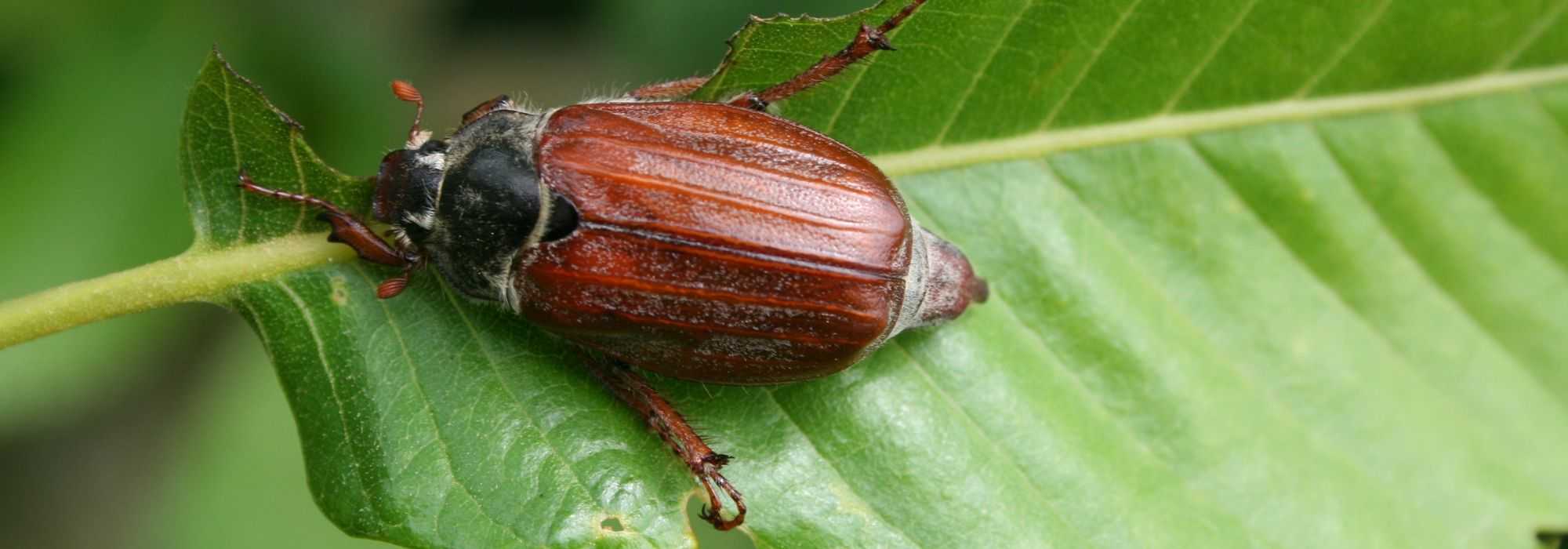
Chafer: identification, damage and control methods
against this odd insect...
Contents
What is that noisy, somewhat clumsy insect that bangs against your window in the evening? It’s probably a common cockchafer.
Feared for its ability to devastate crops, especially in orchards, this nocturnal beetle has seen its numbers fall considerably in recent decades and is no longer as problematic as it once was.
But, since cockchafer larvae feed on roots, finding them in soil still causes some concern.
How to recognise it, especially when at the “white grub” stage? What damage should be feared? Should you intervene or leave it alone? Find out everything in our advice sheet!
What is the common cockchafer?
Common cockchafer or Melolontha melolontha is a large beetle 20 to 30 mm long with reddish-brown elytra and seen occasionally from May to early July in our gardens. The male can be more or less easily distinguished from the female by looking at the antennae: 7 lamellae on the male compared with only 6 on the female.
At the larval stage, which in fact lasts several years, the cockchafer can be mistaken for the golden rose chafer, another beetle but metallic green and much less problematic than the common cockchafer. However, they are easy to tell apart:
- Common cockchafer larva, aka the “white grub”: whitish to yellowish, comma-shaped with a black spot on the rear and a large head.
- Golden rose chafer larva: whitish-grey with a small head, short legs and a large rear.
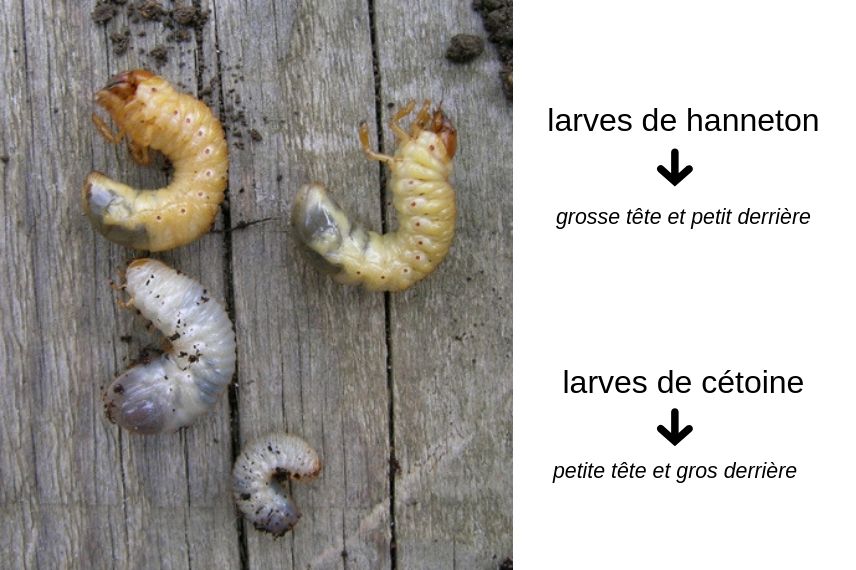
To find out more, read our article : “Golden rose chafer: all you need to know about this large garden insect”
Complete life cycle of this insect spans three years. Larvae hatch 4 or 5 weeks after eggs are laid in spring, then burrow into soil to hibernate. The following spring the larvae come back up and attack the roots of plants to feed. They then hibernate once more, only pupating the next summer. The imago (young adult) emerges from the pupa but remains underground. It is only the following spring that it will emerge and fly in the garden. Cockchafer appearances are therefore periodic; some years many are seen, especially on the warmest days.
Garden damage and control methods
Possible garden damage :
- White grubs or larvae chew plant roots. If larvae are few in number, damage remains very limited. If they occur in very large numbers (which almost never happens nowadays!), the situation can become problematic.
- Larvae can also damage short grass meadow by lifting a few clods of soil.
- Adults nibble slightly on tree or deciduous bush leaves, sometimes also on some flowers or fruits.
Control methods :
- In vegetable garden, a good winter plough to 50 cm will kill a large proportion of cockchafer larvae. Do not overdo it, though; soil is fragile and excessive ploughing will disturb its delicate balance.
- Hoeing or shallow cultivation, even superficial, is sufficient to destroy some eggs or reduce larvae population.
- Avoiding persecution of natural predators is the best way to prevent cockchafer invasion. A garden welcoming hedgehogs, for example, or an old apple tree to serve as a “spot” for little owls to nest are examples of good solutions.
- It is possible to apply in September and on an infested area a water solution of nematodes Heterorhabditis bacteriophora that feed on cockchafer larvae.
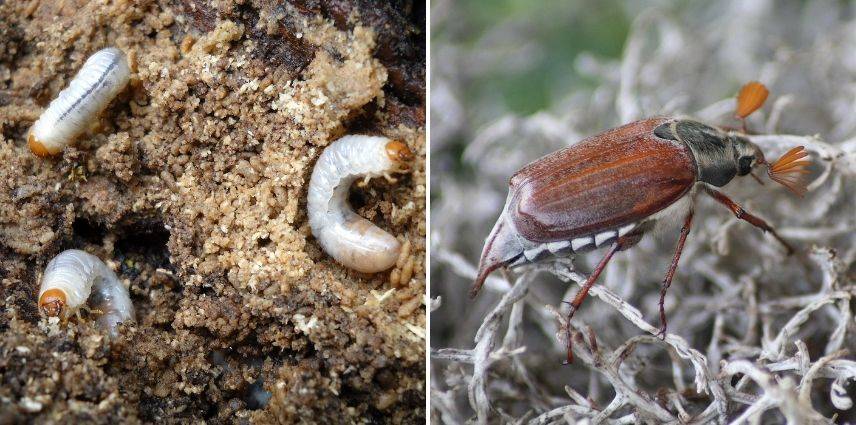
Ecological importance of the common cockchafer
Adult common cockchafer provides food for many flying animals: many insectivorous birds and even nocturnal raptors during nesting season, such as Little Owls (Athene noctua), and bats such as the serotine bat. The larva, meanwhile, is prized by hedgehogs, field mice and moles. Common cockchafer therefore plays a very important role in the food chain.
Cockchafers are completely harmless to humans: they do not sting, bite or scratch… They are simply attracted to lights at night, which is why they come close to houses and seem to take a mischievous pleasure in ‘tapping’ on windows.
Larvae also help to aerate the soil, like all soil macrofauna. Moreover, they contribute, somewhat despite us, to bringing organic matter to the soil by eating plants’ roots and then leaving their little droppings. This organic matter then becomes available to plants that remain.
please note: like many insects, common cockchafers have declined across Europe for various reasons such as loss of natural habitats, many years of pesticidal use and mechanisation of ploughing in arable farming. But the real “witch-hunt” against all hypothetical garden pests is not innocent either. In short, let’s make room for these friendly creatures and other garden inhabitants.
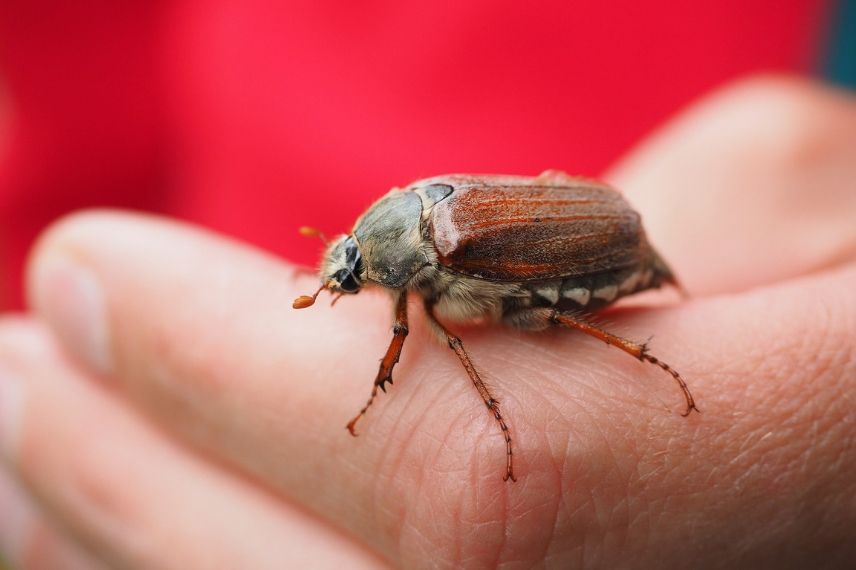
Did you know?
- Subfamily Melolonthinae comprises 11,000 species of chafers worldwide, such as, for example here, the garden chafer and the cockchafer.
- In the past, children tied a string around the insect’s body to make it whirl above their heads.
- Considered a crop pest, the cockchafer was, towards the end of the 19th century and the beginning of the 20th, zealously hunted. Children were encouraged to catch and destroy them, especially in orchards. This practice even had a name: hannetonnage.
- Until recently, common cockchafers were listed among protected species in France and Belgium. They are no longer because, thanks to beneficial changes in farming methods and a drastic reduction in use of insecticidal products, cockchafers are slowly regaining hair. Phew!
- Subscribe!
- Contents
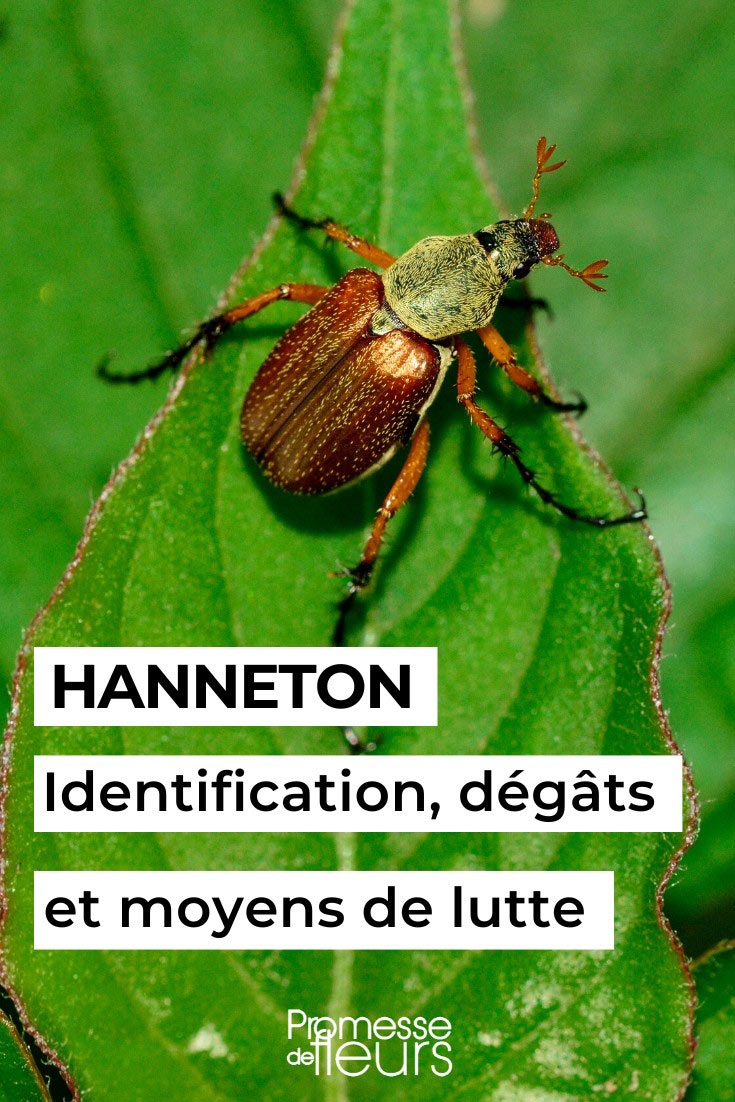































Comments